



Policy Rate Updates: Double cut finale
 DOWNLOAD
DOWNLOAD

Monthly Economic Update: One for the road
 DOWNLOAD
DOWNLOAD

Inflation Update: Still low, still slow
 DOWNLOAD
DOWNLOAD


S&P expects slower loan growth due to rate hikes

S&P GLOBAL RATINGS expects Philippine banks to post slower loan growth this year due to higher interest rates as the central bank continues to tighten its policy settings to bring down inflation.
The credit rater said in a report on Wednesday that it sees credit growth slowing to 7-9% this year after peaking at 12% in 2022 as yields are expected to rise, with the Bangko Sentral ng Pilipinas (BSP) likely to continue hiking rates due to elevated core inflation.
The full effect of last year’s rate hikes will also be felt this year, S&P added.
The BSP hiked benchmark interest rates by 50 basis points (bps) at its Feb. 16 meeting, bringing the key rate to 6%.
The move brought cumulative increases in borrowing costs since May 2022 to 400 bps.
headline inflation eased slightly to 8.6% in February from the 14-year high of 8.7% seen the prior month, data released on Tuesday showed.
However, core inflation picked up to 7.8% in February from 7.4% the previous month and 1.9% in the same month last year. This was the highest in more than 22 years or since the 8.2% recorded in December 2000.
For the first two months of the year, headline inflation averaged 8.6%. The BSP expects inflation to average 6.1% this year.
Slower economic growth due to higher inflation and interest rates will lead to decreased demand for credit, with consumer loans and asset quality seen to take a hit, the credit rater said.
“High inflation and rising interest rates will erode household savings, putting a strain on low-income households. Credit cards and unsecured personal loans could be most at risk,” it said.
“Past data indicate that banks’ ability to price up is suppressed by steep competition for loans to large conglomerates. Also, banks will likely take a pragmatic approach to interest resets to limit new NPLs (nonperforming loans),” S&P added.
It said higher interest rates could increase default risks for some leveraged and low-income borrowers.
“Large corporates should stay resilient due to their diversified business profiles and adequate liquidity. Loans to consumers and micro, small and midsize enterprises (MSMEs) are small in ticket size, limiting asset quality impact,” it said.
With asset quality deterioration seen to be manageable, S&P expects banks’ provisioning requirement to “stay contained.”
“Nonetheless, credit costs should stay slightly above pre-pandemic levels. Banks are likely to remain cautious amid rising interest rates and high inflation,” it said.
“Banks have adequate provisions, which will help them to weather the challenges ahead,” the credit rater added.
It said despite slower loan growth and asset quality risks, higher interest rates this year will support banks’ profitability, possibly widening net interest margins by about 20 bps.
“Credit costs will stay flattish, so banks’ return on average assets could improve further to 1.5% in 2023. Cost-to-income ratio should stay at 55%-56% as banks will continue to invest in digital capabilities,” S&P said.
Philippine banks also remain well-capitalized, which will help them absorb increased credit stress, it added. — AMCS
This article originally appeared on bworldonline.com





 By BusinessWorld
By BusinessWorld